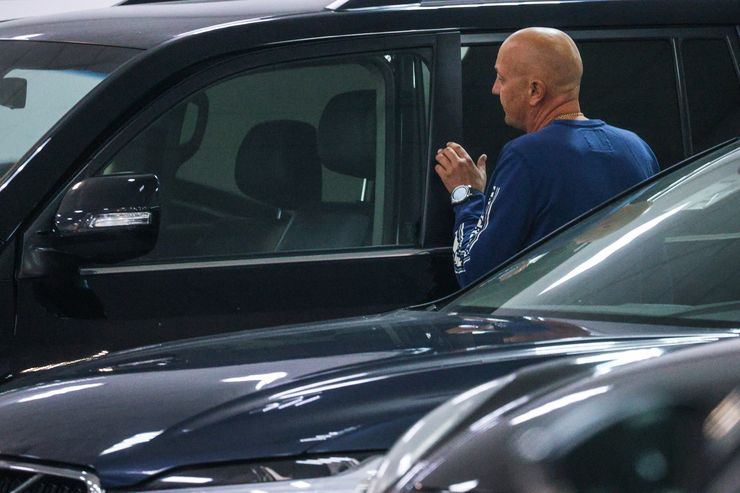What is the best amount to write in a car purchase contract
- January 10, 2023
- 0
The domestic car market is steadily turning into a large “flea market”, where mainly used cars are sold and bought. The AvtoVzglyad portal clarified how it is more
The domestic car market is steadily turning into a large “flea market”, where mainly used cars are sold and bought. The AvtoVzglyad portal clarified how it is more

To begin with, a brief elaboration on the legislation, namely on that part of the tax code of the Russian Federation, which deals with the sale of cars from private hands. After all, the transfer of ownership of the car with the full and voluntary consent of the parties to the transaction is only fiscally interesting for the state. In general, a citizen who has received any income is obliged to give the state budget 13% of the money earned. But in a situation involving the sale of a car, he is exempt from such compensation if one of the following conditions is met: the person has owned the sold vehicle for more than three years, sold it cheaper than bought it, or when the car “left” to a new owner for a price of less than 250,000 rubles.
Few of us like to pay taxes. Therefore, in all cases that do not fit the above criteria, sellers are tempted to “save”. The first and most primitive method used for this is a stupid underestimation of the transaction amount in the sales contract to the “tax-free” level. Suppose that after two years of ownership by the seller, a car is valued by the buyer and the market at 6 million rubles. And initially a passenger car at a car dealer cost 4.5 million, a very real situation after the jump in car prices that happened to us at the beginning of last year.
In other words, the actual profit of the seller from the transaction is 1.5 million rubles. The taxable part will be 1.25 million rubles. minus 250,000 “deductions”. A 13% share of 1.25 million – 162,000 “wooden”. In order not to give this money to the state budget, it is prescribed in the DKP that the car be sold for “tax-free” 250,000 rubles. Although, in fact, the seller gets his hands on the entire amount. Everything seems to be fine.
But let’s say, later it turns out: the sold car has legal problems, and the new owner cannot register it with the traffic police. Or her engine was “killed”, and the seller hid this fact from the buyer, deceiving him. With an underestimated amount specified in the purchase and sale agreement, the defrauded citizen will not be able to return what he later spent, even in court. Only 250,000 rubles registered in the DKP. On the other hand, when the buyer wants to sell this car himself some time later, he will also be forced to break the law: he will insist on including the transaction amount of 250,000 rubles in the contract. In order not to “get taxed” in turn.
A variation of the scheme for selling a car described above is the reduced price variant of the DCT, which has a different contract attached – “for additional equipment”. In total, the full actual price of the transaction appears in both contracts. The scheme appears “white and fuzzy” only as long as both sides are happy with the consequences. In fact, the price of the car that is still “on paper” appears to be underestimated (as indicated in the DCT) – with all the possible problems for the buyer.
The most reliable way for him to draw up a contract for the sale of a passenger car is with an indication of the actual price of the vehicle. Resellers and car dealers hate it because it means “paying taxes” to them. And in the case of a deal between individuals, this option is the safest for everyone. The only negative option for the seller is if he himself bought a car at a reduced price less than three years ago. In this situation, he will have to draw up an income statement and submit it to the tax authorities and therefore have to pay income tax. Note that this is by no means the biggest problem in life. After all, no one bothers you after buying a car to drive it for more than three years, and then “have a good night’s sleep” after the sale.


To begin with, a brief elaboration on the legislation, namely on that part of the tax code of the Russian Federation, which deals with the sale of cars from private hands. After all, the transfer of ownership of the car with the full and voluntary consent of the parties to the transaction is only fiscally interesting for the state. In general, a citizen who has received any income is obliged to give the state budget 13% of the money earned. But in a situation involving the sale of a car, he is exempt from such compensation if one of the following conditions is met: the person has owned the sold vehicle for more than three years, sold it cheaper than bought it, or when the car “left” to a new owner for a price of less than 250,000 rubles.
Few of us like to pay taxes. Therefore, in all cases that do not fit the above criteria, sellers are tempted to “save”. The first and most primitive method used for this is a stupid underestimation of the transaction amount in the sales contract to the “tax-free” level. Suppose that after two years of ownership by the seller, a car is valued by the buyer and the market at 6 million rubles. And initially a passenger car at a car dealer cost 4.5 million, a very real situation after the jump in car prices that happened to us at the beginning of last year.
In other words, the actual profit of the seller from the transaction is 1.5 million rubles. The taxable part will be 1.25 million rubles. minus 250,000 “deductions”. A share of 13% of 1.25 million – 162,000 “wooden”. In order not to give this money to the state budget, the DKP stipulates that the car should be sold for “tax-free” 250,000 rubles. Although, in fact, the seller gets his hands on the entire amount. Everything seems to be fine.
But let’s say, later it turns out: the sold car has legal problems, and the new owner cannot register it with the traffic police. Or her engine was “killed”, and the seller hid this fact from the buyer, deceiving him. With an underestimated amount specified in the purchase and sale agreement, the defrauded citizen will not be able to return what he later spent, even in court. Only 250,000 rubles registered in the DKP. On the other hand, when the buyer wants to sell this car himself some time later, he will also be forced to break the law: he will insist on including the transaction amount of 250,000 rubles in the contract. In order not to “get taxed” in turn.
A variation of the scheme for selling a car described above is the reduced price variant of the DCT, which has a different contract attached – “for additional equipment”. In total, the full actual price of the transaction appears in both contracts. The scheme appears “white and fuzzy” only as long as both sides are happy with the consequences. In fact, the price of the car that is still “on paper” appears to be underestimated (as indicated in the DCT) – with all the possible problems for the buyer.
The most reliable way for him to draw up a contract for the sale of a passenger car is with an indication of the actual price of the vehicle. Resellers and car dealers hate it because it means “paying taxes” to them. And in the case of a deal between individuals, this option is the safest for everyone. The only negative option for the seller is if he himself bought a car at a reduced price less than three years ago. In this situation, he will have to draw up an income statement and submit it to the tax authorities and therefore have to pay income tax. Note that this is by no means the biggest problem in life. After all, no one bothers you after buying a car to drive it for more than three years, and then “have a good night’s sleep” after the sale.
Source: Avto Vzglyad
Donald Salinas is an experienced automobile journalist and writer for Div Bracket. He brings his readers the latest news and developments from the world of automobiles, offering a unique and knowledgeable perspective on the latest trends and innovations in the automotive industry.